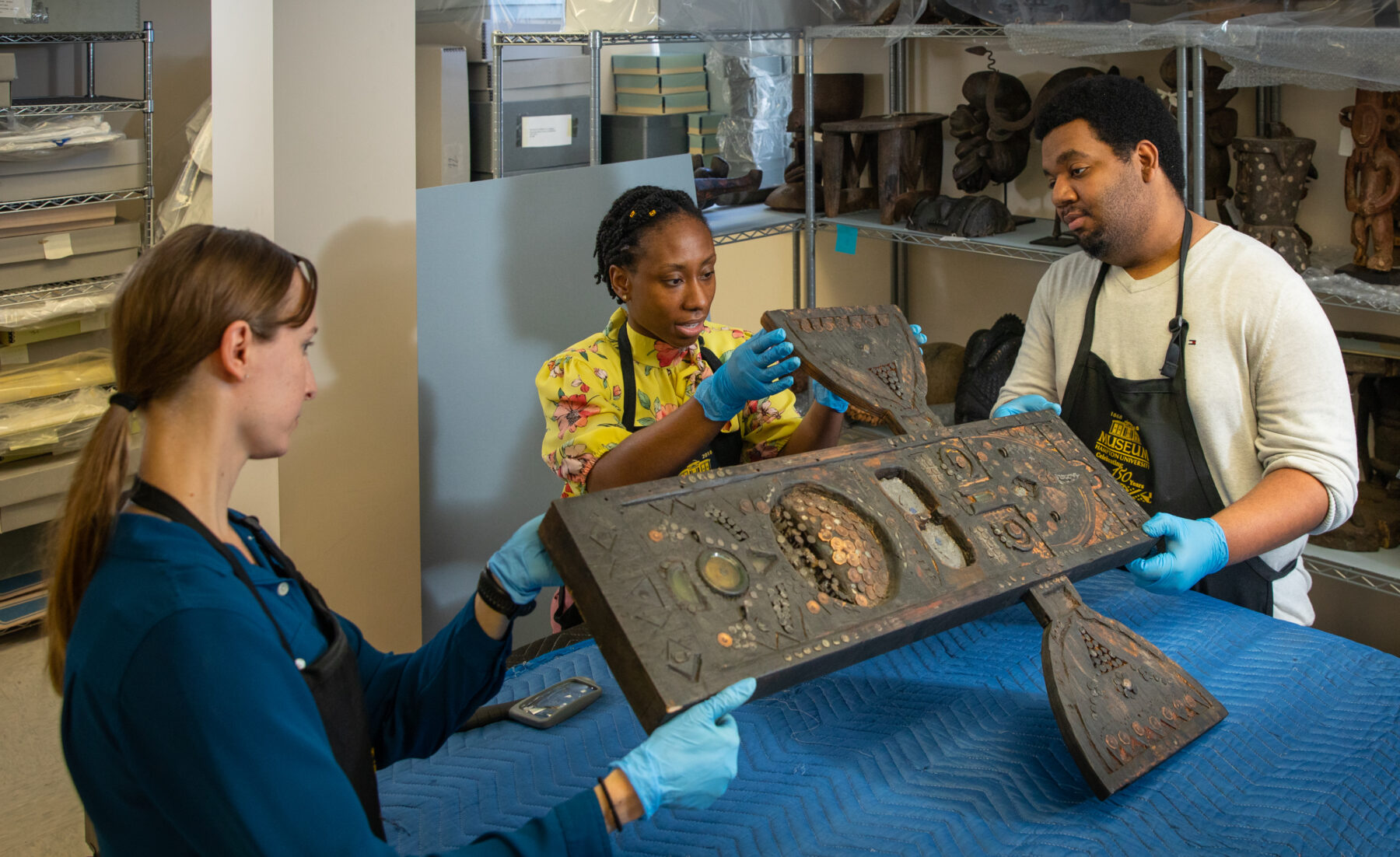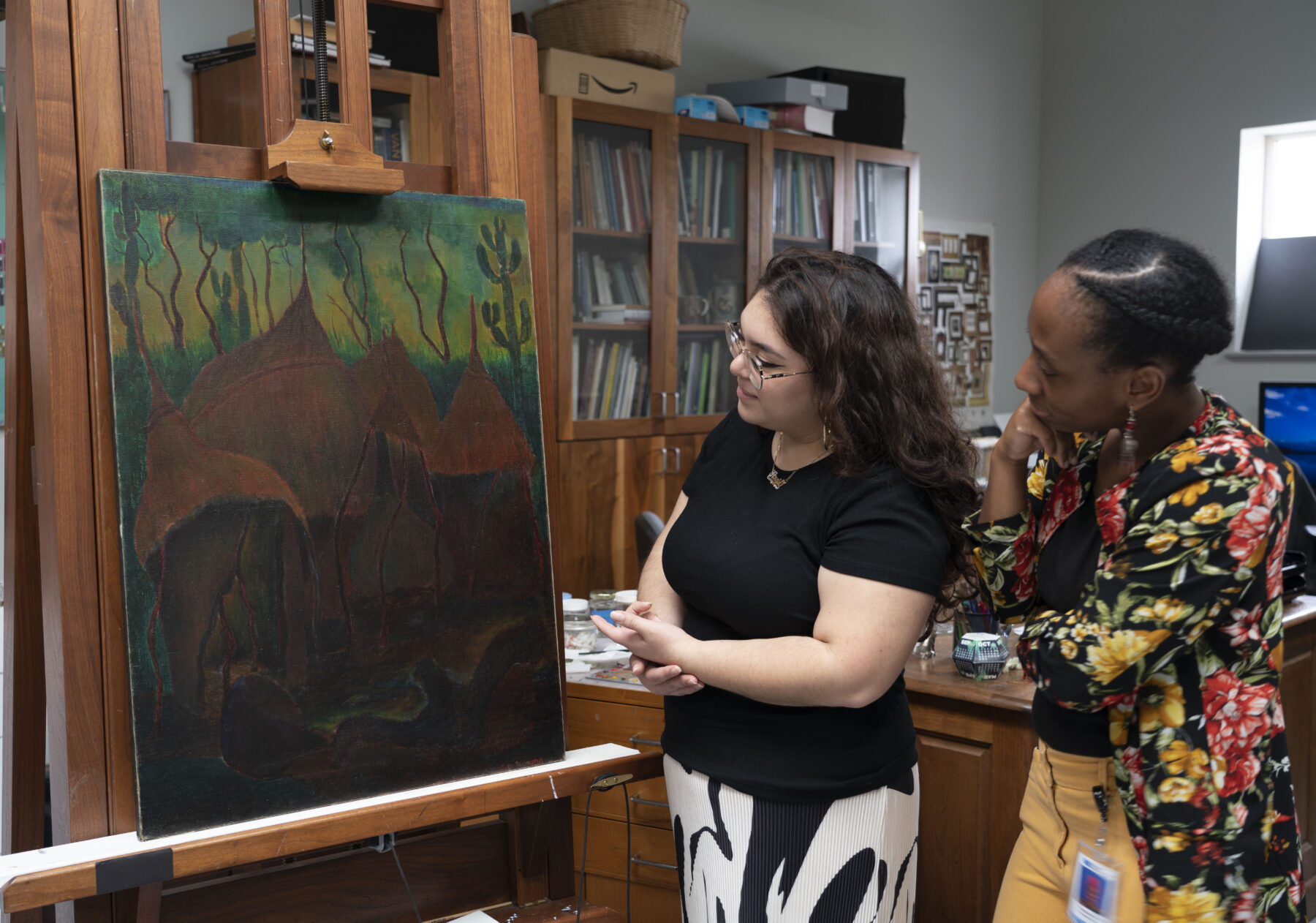The Similarities Between Akinola Lasekan’s Paintings and Political Cartoons

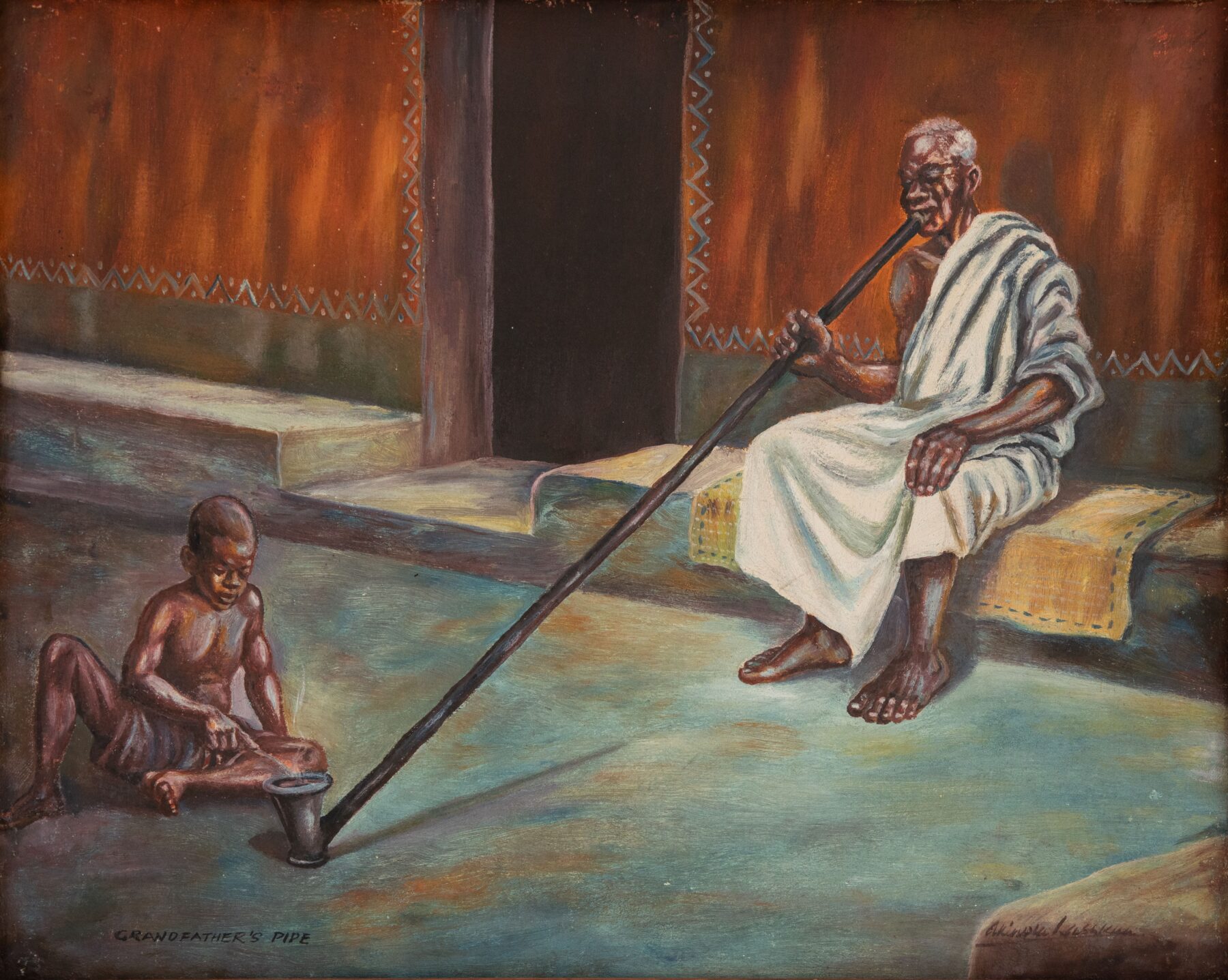
Akinola Lasekan, Grandfather’s Pipe, ca. 1950s. Oil on canvas, 17 ⅛ × 21 ³⁄₁₆ × 1 ⅛ in. Hampton University Museum, Gift of the Harmon Foundation, 67.264
Akinola Lasekan (1916-72) was an accomplished painter and political cartoonist. His paintings capture the beauty and humanity of Nigeria and its people, with the technique of Realism used to create dynamic and detailed portraits, landscapes, and village scenes. His political cartoons were used to attack the British colonial system, with an aim to propel Nigeria toward independence from British colonial rule. To this end, his nationalistic political cartoons featured monotone and undetailed settings and figures; the sacrificed details allowed for an easily digestible message that everyone could consume. Although seemingly dissimilar, there are instances where Lasekan’s political paintings and cartoons actually share similarities in their content and messaging. In this post, we will dive into Lasekan’s painting Grandfather’s Pipe, and his political cartoon The Inextinguishable Fire of the Human Soul, to discuss the similarities between these two visually opposing artworks.
Grandfather’s Pipe (ca.1950s)
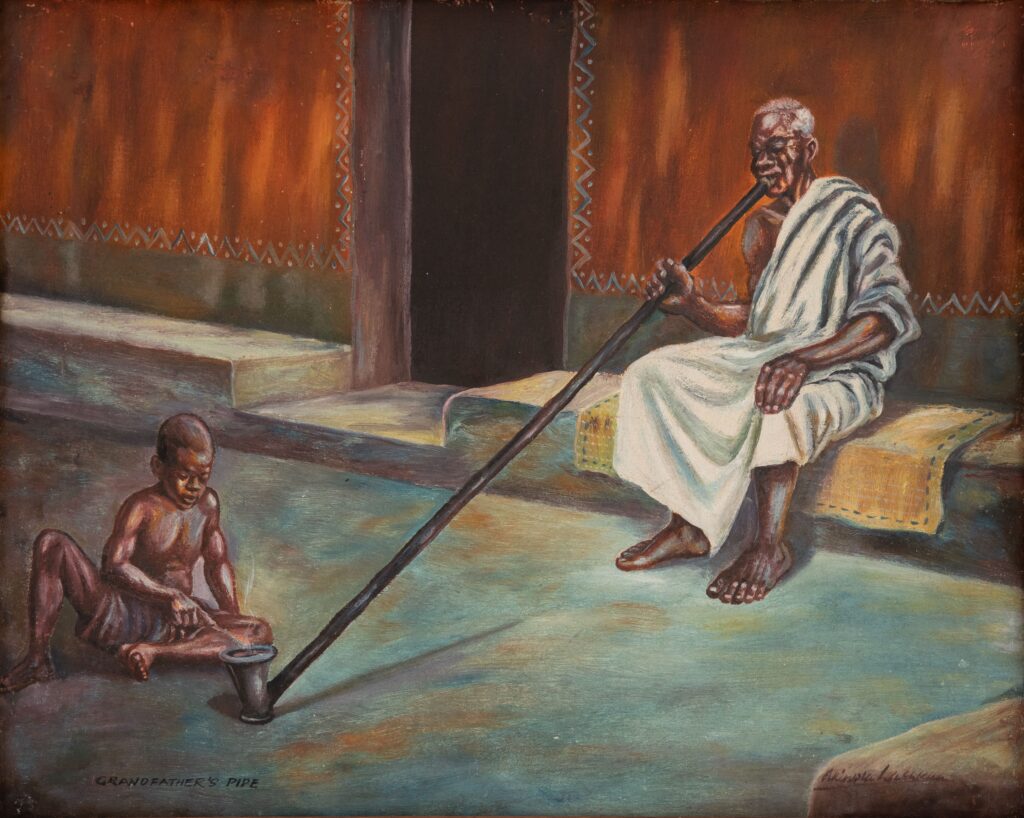
Two figures, assumed to be a grandfather and grandson, are seated outside a home. The grandfather holds a long pipe to his mouth, in preparation for the smoke he is about to inhale. His grandson lights the pipe’s end as he lounges on the floor.
The Inextinguishable Fire of the Human Soul (1950)
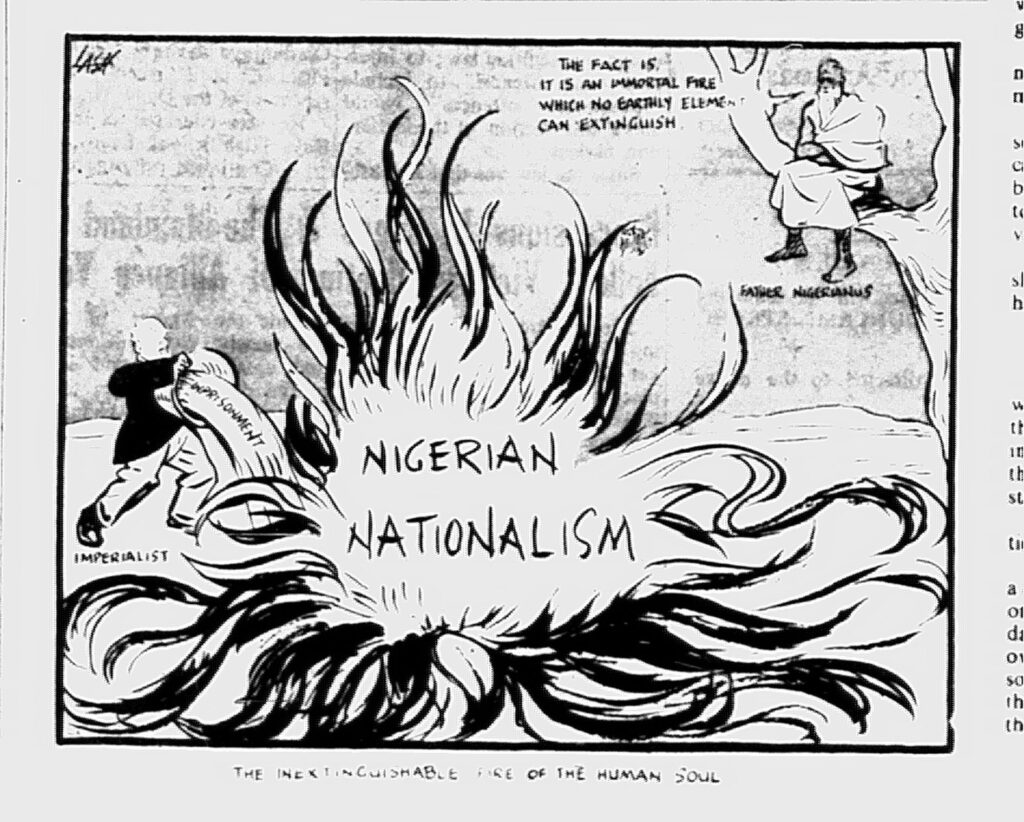
In this political cartoon, an imperialist uses the waters of imprisonment to douse the flames of Nigerian nationalism. However, the imperialist’s efforts are in vain because his actions only cause the fire to rage uncontrollably. High in a tree is Father Nigerianus, who overlooks the futile efforts of the imperialist and states, “The fact is, it is an immortal fire which no earthly element can extinguish.”
Before reading on, look closely at these two artworks and try to find your own similarities. Consider the placement and actions of the figures, their postures, and clothing. Now let’s compare.


The Similarities
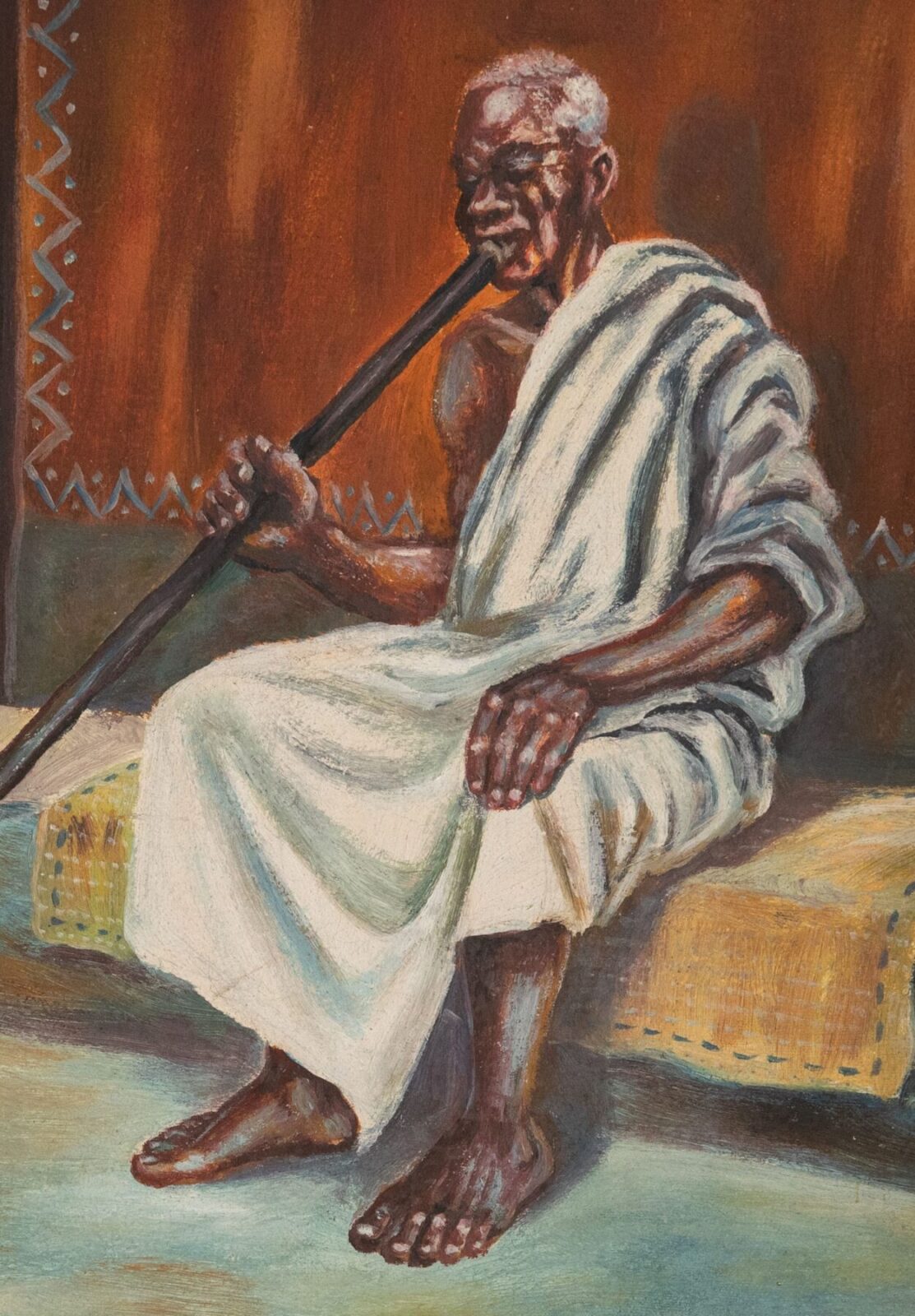
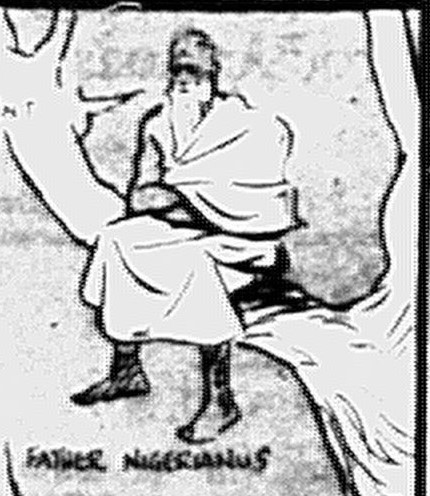
Both Lasekan’s painting and political cartoon position a white-clad, elderly man at an elevated position at the right of the frame. Their clothing, age, and position cast these men as wise and spiritually endowed figures. When we revisit Father Nigerianus’ statement (“The fact is, it is an immortal fire which no earthly element can extinguish”), we acknowledge Father Nigerianus’ ability to comprehend the spiritual nature of fire; his statement also makes us question whether his insight into the spirituality of the flame makes him a spiritual being.
In both images, Lasekan positions the opposites of these elder figures on the ground in the left frame. Grandfather’s Pipe presents a wise figure (the grandfather) juxtaposed with a naive figure (the grandson). In The Inextinguishable Fire of the Human Soul, Father Nigerianus is wise and spiritually elevated, unlike the unwise and earthly imperialist. Lasekan portrays the naivety of the imperialist by illustrating the figure’s unsuccessful and foolish attempt to extinguish a large fire with a small bucket of water. The imperialist’s actions speak to the unfair imprisonment of those associated with Nigeria’s nationalism movement, undertaken by Nigeria’s British colonial government. The grandson’s naivety is not due to his actions, as seen by the imperialist in the political cartoon. The grandson’s naivety is due to his age, seeing how his tender age has not yet provided him with the same wisdom as his grandfather.

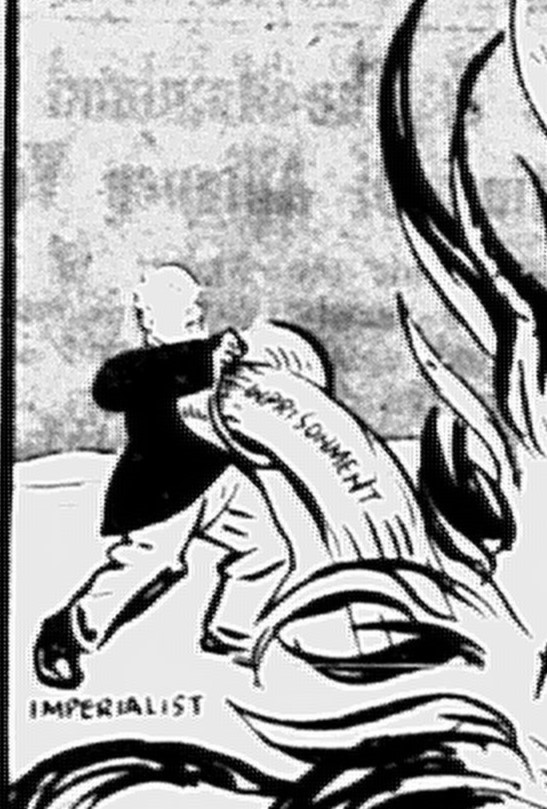
A final similarity between these two artworks is the element of fire. In the political cartoon, Lasekan uses fire to display the unstoppable growth of Nigerian nationalism. Due to the size of the tremendous flame, Father Nigerianus and the imperialist are forever separated, unable to ever reconcile. This is a sharp contrast to his painting, where the grandson uses an unseen fire to light his grandfather’s pipe, allowing for a deep connection between grandfather and grandson. Lasekan captures this intimate moment by using the linear angle of the pipe from grandson to grandfather. The positioning of the pipe implies that the naive boy will eventually become a wise man.
Conclusion
The painting Grandfather’s Pipe, and the political cartoon The Inextinguishable Fire of the Human Soul is one example of the similarities between Lasekan’s work. Visit the exhibition, I Am Copying Nobody: The Art and Political Cartoons of Akinola Lasekan, opening at the Chrysler Museum of Art on April 13th to view more similarities as well as differences between Lasekan’s paintings and political cartoons.
Explore other articles like this
The Andrew W. Mellon Fellowship: Now and Beyond
In this post, I will highlight some of the accomplishments of this project and address two main takeaways that can help those looking to reproduce a similar fellowship program.
Art Spotlight: The Abandoned Hut by Mordecai Buluma
In this blog post Angie and Tashae discuss the symbolism behind The Abandoned Hut by Mordecai Buluma as well as the conservation treatment used to prepare it for exhibition.
Opening of I am Copying Nobody the Art and Political Cartoons of Akinola Lasekan
On April 13, 2024, I Am Copying Nobody: The Art and Political Cartoons of Akinola Lasekan opened at the Chrysler Museum of Art. Here are some highlights from the exhibition.
